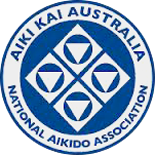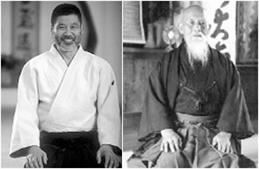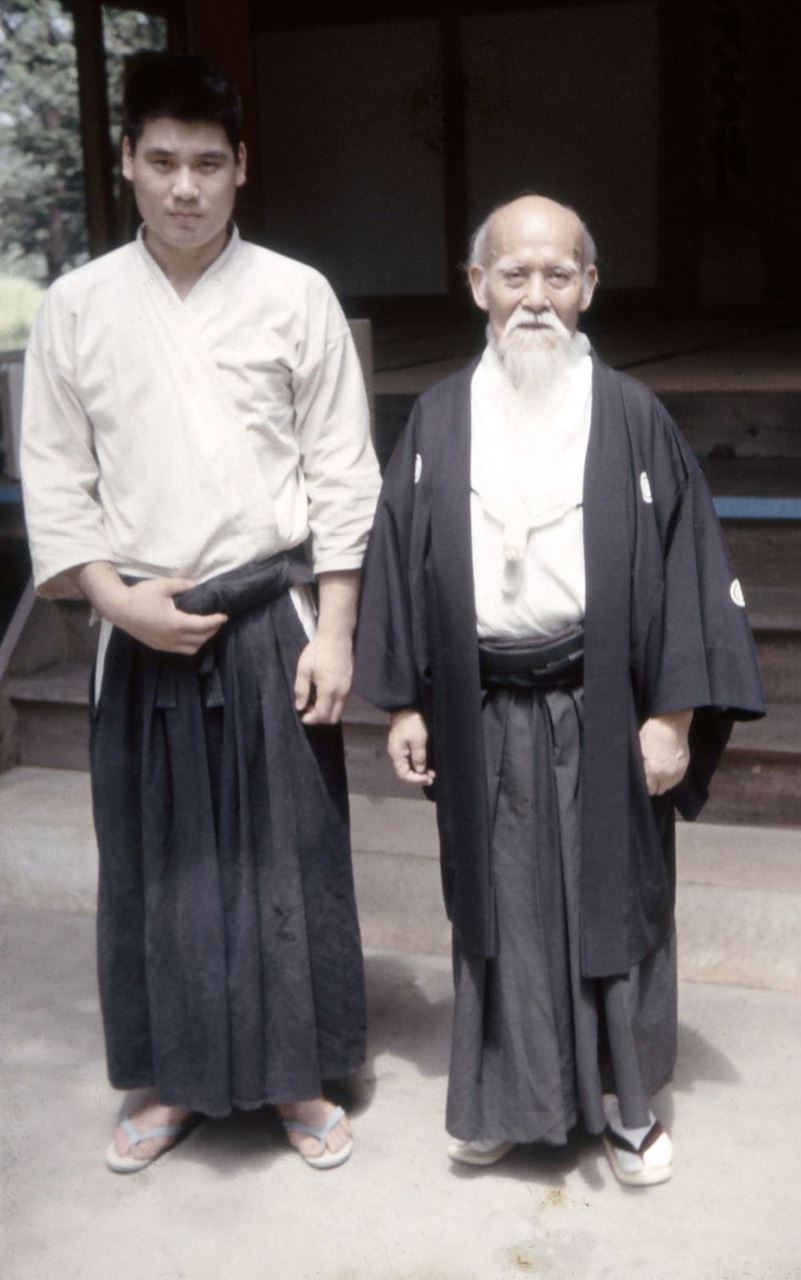Aiki Kai Australia National Aikido Association of Australia | |
aaaa
The son of a landowner from Tanabe, Ueshiba studied a number of martial arts in his youth, and served in the Japanese Army during the Russo-Japanese War. After being discharged in 1907, he moved to Hokkaido as the head of a pioneer settlement; here he met and studied with Takeda Sokaku, the founder of Daito'-ryu' aiki-ju'jutsu. On leaving Hokkaido in 1919, Ueshiba joined the O'moto-kyo' movement, a Shinto sect, in Ayabe, where he served as a martial arts instructor and opened his first dojo. He accompanied the head of the O'moto-kyo' group, Onisaburo Deguchi, on an expedition to Mongolia in 1924, where they were captured by Chinese troops and returned to Japan. The following year, he experienced a great spiritual enlightenment, stating that, "a golden spirit sprang up from the ground, veiled my body, and changed my body into a golden one." After this experience, his martial arts skill appeared to be greatly increased. More detailed history Morihei Ueshiba was born in Tanabe, Wakayama Prefecture, Japan on December 14, 1883, the fourth child (and only son) born to Yoroku Ueshiba and his wife Yuki. The young Ueshiba was raised in a somewhat privileged setting. His father was a rich landowner who also traded in lumber and fishing and was politically active. Ueshiba was a rather weak, sickly child and bookish in his inclinations. At a young age his father encouraged him to take up sumo wrestling and swimming and entertained him with stories of his great-grandfather Kichiemon, who was considered a very strong samurai in his era. The need for such strength was further emphasized when the young Ueshiba witnessed his father being attacked by followers of a competing politician. |
Copyright 2025 |



 Ueshiba Morihei
Ueshiba Morihei 






